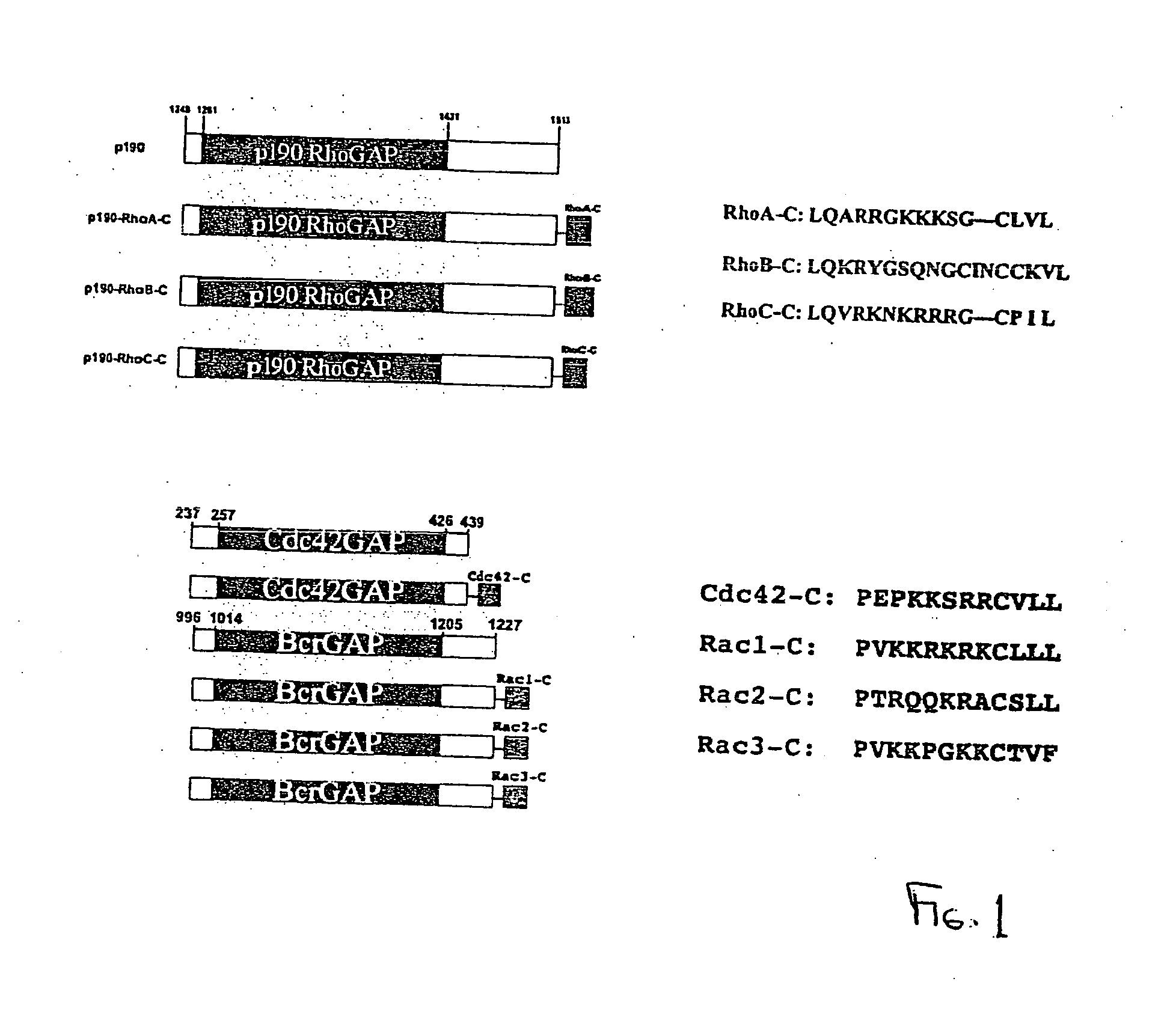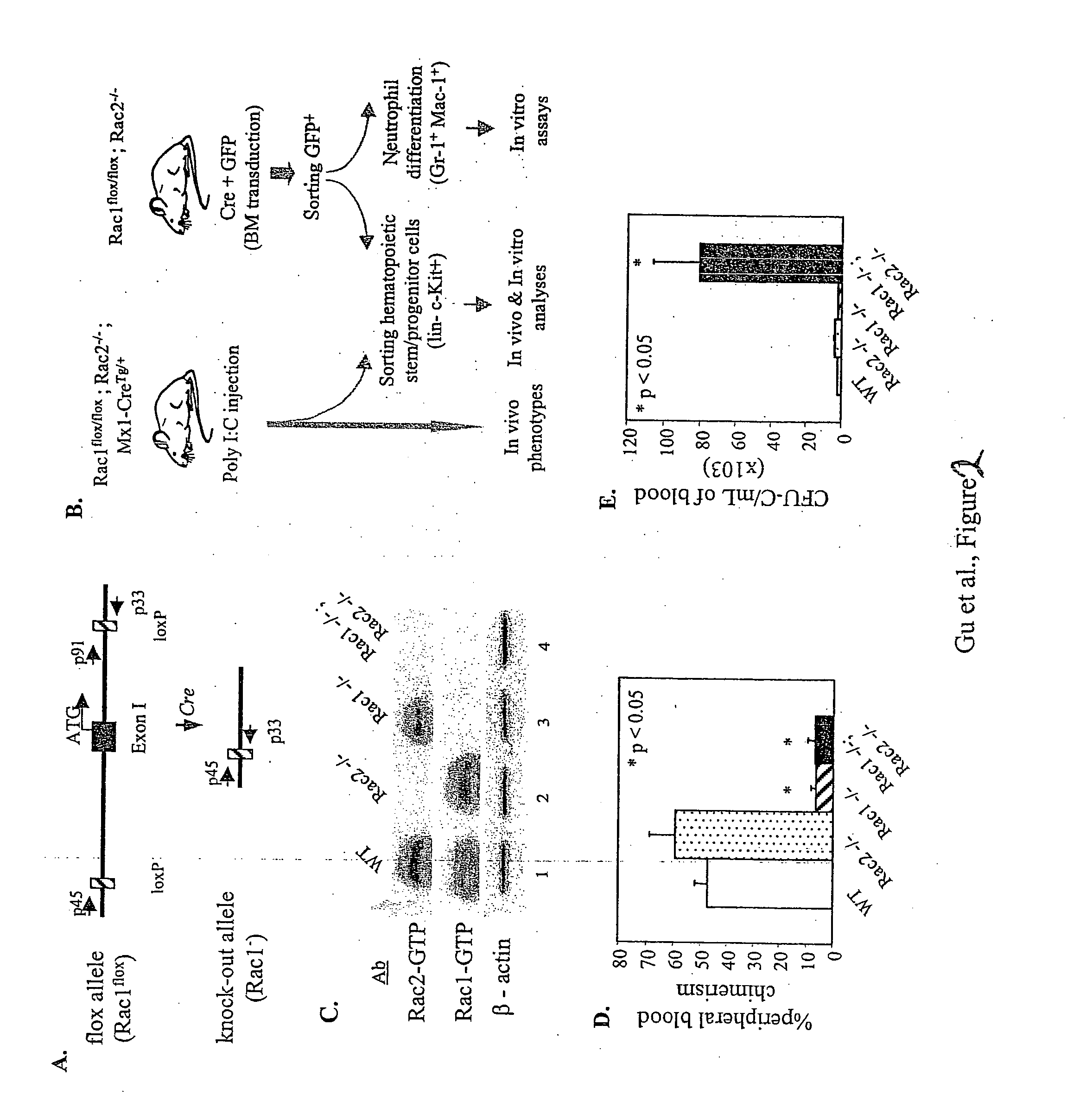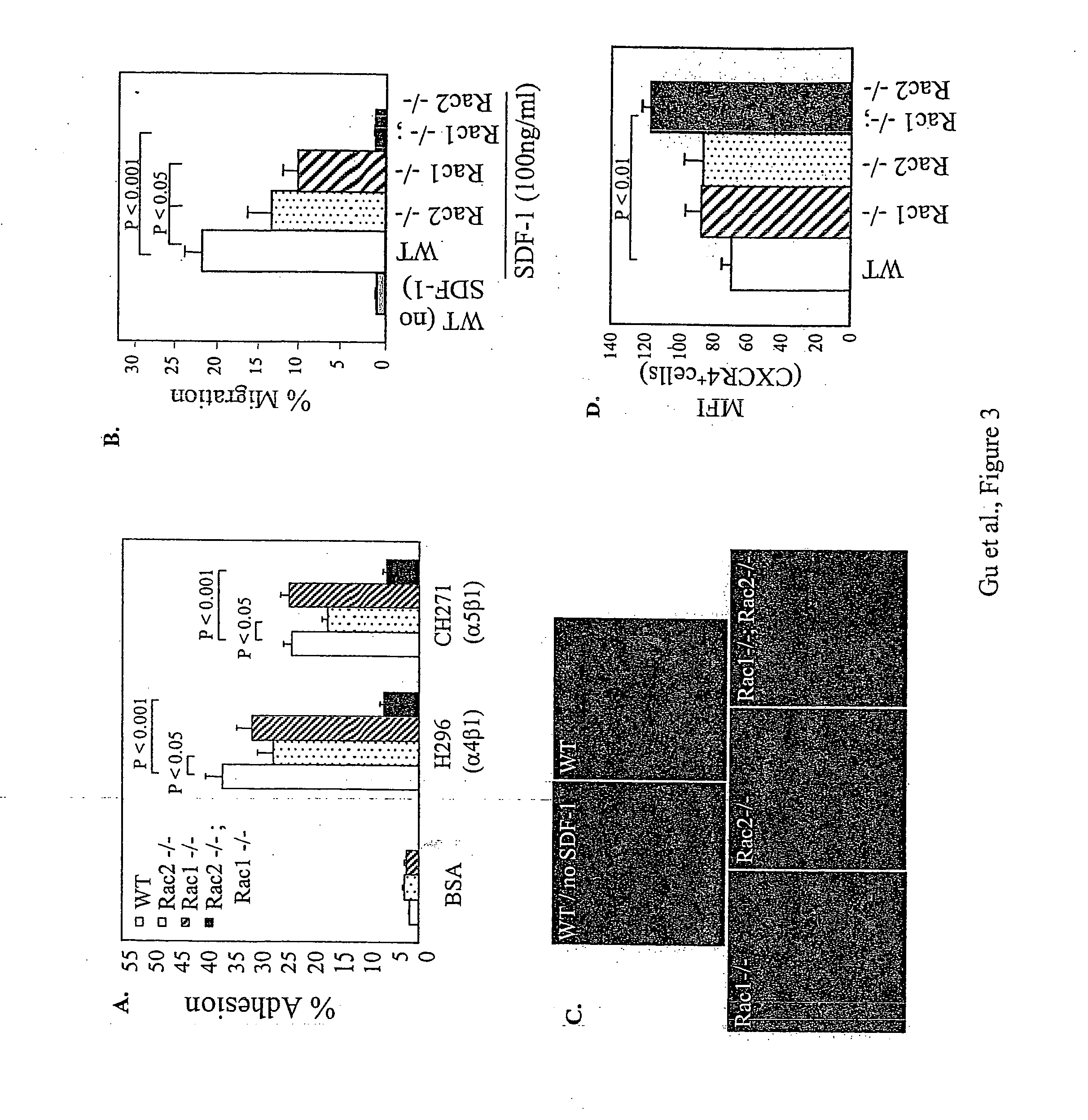Mobilization of hematopoietic cells
a technology of hematopoietic cells and hematopoietic cells, which is applied in the field of hematopoietic cell mobilization, can solve the problems of increasing the patient's risk of infection and/or hemorrhage, reducing the white blood cell count of patients, and suppressing the activity of bone marrow hematopoietic cells, etc., and achieves the effect of achieving the therapeutic effect level of cells
- Summary
- Abstract
- Description
- Claims
- Application Information
AI Technical Summary
Benefits of technology
Problems solved by technology
Method used
Image
Examples
example 1
Role of Rac1, 2, and 3 in Hematopoeitic Cells
[0290] Rho GTPases, members of the Ras superfamily, are important regulators of cellular function and signal transduction pathways in all eukaryotic cells. In mammalian cells, this family is subdivided into Rho, Rac and Cdc42 GTPase families, all of which play distinct roles in regulating actin assembly and motility . The roles of Rho GTPases in hematopoietic cells have only recently begun to be elucidated. There are three Rac GTPases, Rac1, Rac2, and Rac3, that are highly homologous, and whose functional roles therefore may overlap. Rac1 is ubiquitously expressed, while the expression of Rac2 is restricted to cells of hematopoietic origin and Rac3 is expressed primarily in brain. Since Rac1 and Rac2 share 92% amino acid identity, hematopoietic cells provide a unique opportunity to elucidate the distinct roles of these highly related proteins.
[0291] Initially shown to regulate the actin cytoskeleton and give rise to the formation of lam...
example 2
Role of Rac1, 2 and 3 in Fully Differentiated Neutrophils
[0300] The roles of Rac1 and Rac2 in fully differentiated neutrophils derived from HSC / P were studied. After in vitro differentiation, no significant differences were seen in neutrophil morphology or expression of specific differentiation antigens, Gr-1 and CD11b between each genotype. In addition, no significant differences were seen in cells deficient in either Rac1 or Rac2 (but not both) in expression of adhesion molecules CD11a, CD11b or CD18. However, Rac1− / −; Rac2− / − neutrophils displayed a significant decrease in the surface expression of each of these integrins in comparison with WT cells and this reduced integrin expression was associated with significantly reduced adhesion in comparison with WT cells via each of the integrins (FIG. 4A). However, surprisingly, a marked difference in integrin-mediated cell spreading between Rac1− / − and Rac2− / − neutrophils was evident (FIGS. 4B and 4C). Rac1− / − neutrohils displayed a ˜...
example 3
Analysis of the Content of Hematopoietic Progenitors in Peripheral Blood, Bone Marrow and Spleen of Double Rac1 / Rac2 Knockout (KO) Mice
[0302] This experiment was used to analyze the effect of in vivo loss of function of Rac1 and Rac2 in the mobilization of hematopoietic progenitors from bone marrow to peripheral blood.
[0303] Conditional KO Rac1 mice were generated by Dr. Kwiatkowski (Brigham's and Women's Hospital, Harvard University, Boston, Mass.) by using standard protocols consisting of transfection of 129 / Sv cells with recombinant cDNA homologous to the Exon1 of the murine Rac1 gene. The transfected plasmid contained sequences encoding two lox sequences (floxed) and between them, a neomycin phosphotransferase cassette. Selected 129 / Sv were injected into pseudo-pregnant female mice according to standard methods. F1 mice were intercrossed to obtain double flox / flox mice and later on, backcrossed with C57B1 / 6 mice.
[0304] Rac1KO mice were intercrossed with Rac2KO mice (generated...
PUM
| Property | Measurement | Unit |
|---|---|---|
| Tm | aaaaa | aaaaa |
| Tm | aaaaa | aaaaa |
| body weight | aaaaa | aaaaa |
Abstract
Description
Claims
Application Information
 Login to View More
Login to View More - R&D
- Intellectual Property
- Life Sciences
- Materials
- Tech Scout
- Unparalleled Data Quality
- Higher Quality Content
- 60% Fewer Hallucinations
Browse by: Latest US Patents, China's latest patents, Technical Efficacy Thesaurus, Application Domain, Technology Topic, Popular Technical Reports.
© 2025 PatSnap. All rights reserved.Legal|Privacy policy|Modern Slavery Act Transparency Statement|Sitemap|About US| Contact US: help@patsnap.com



